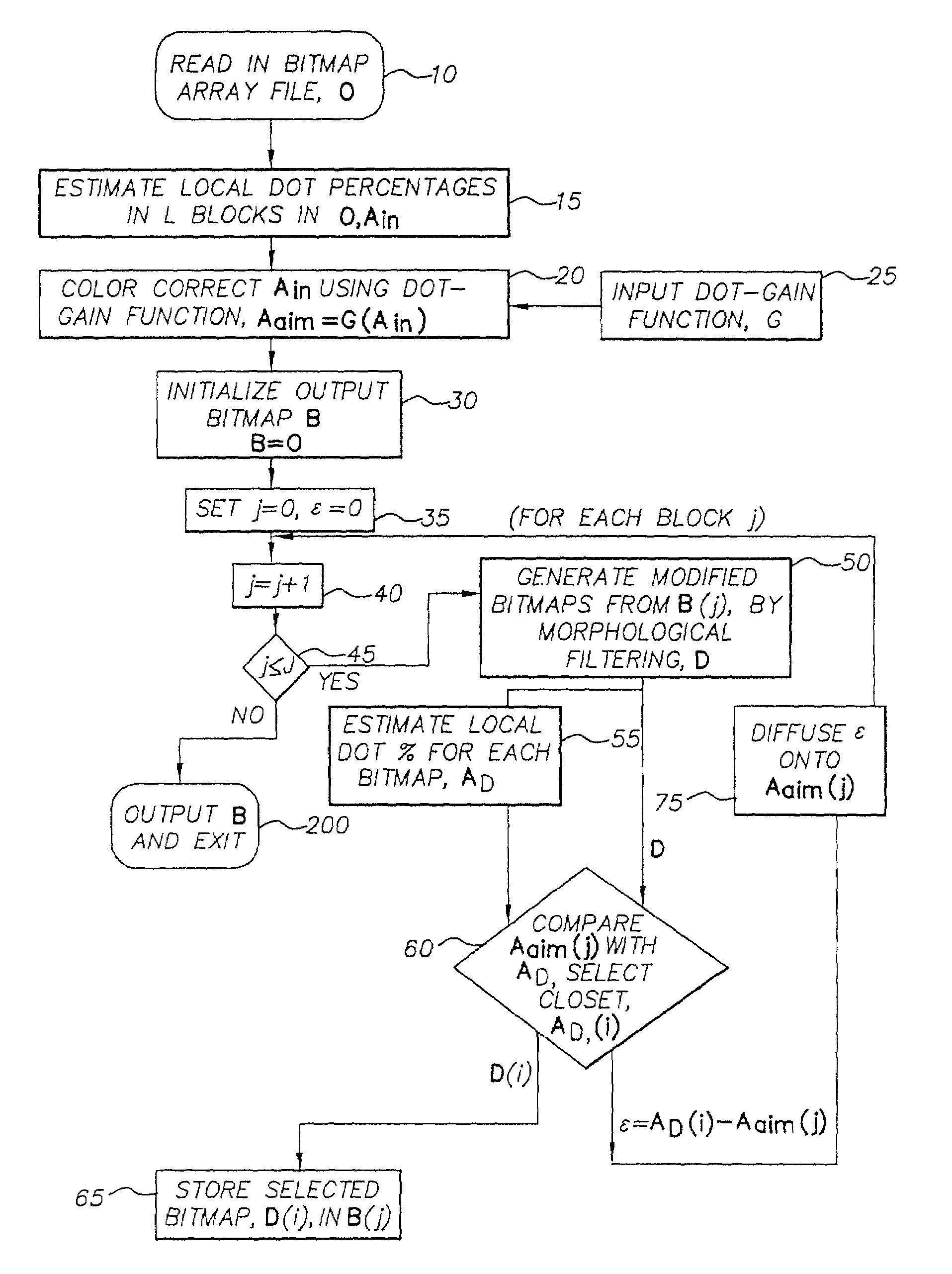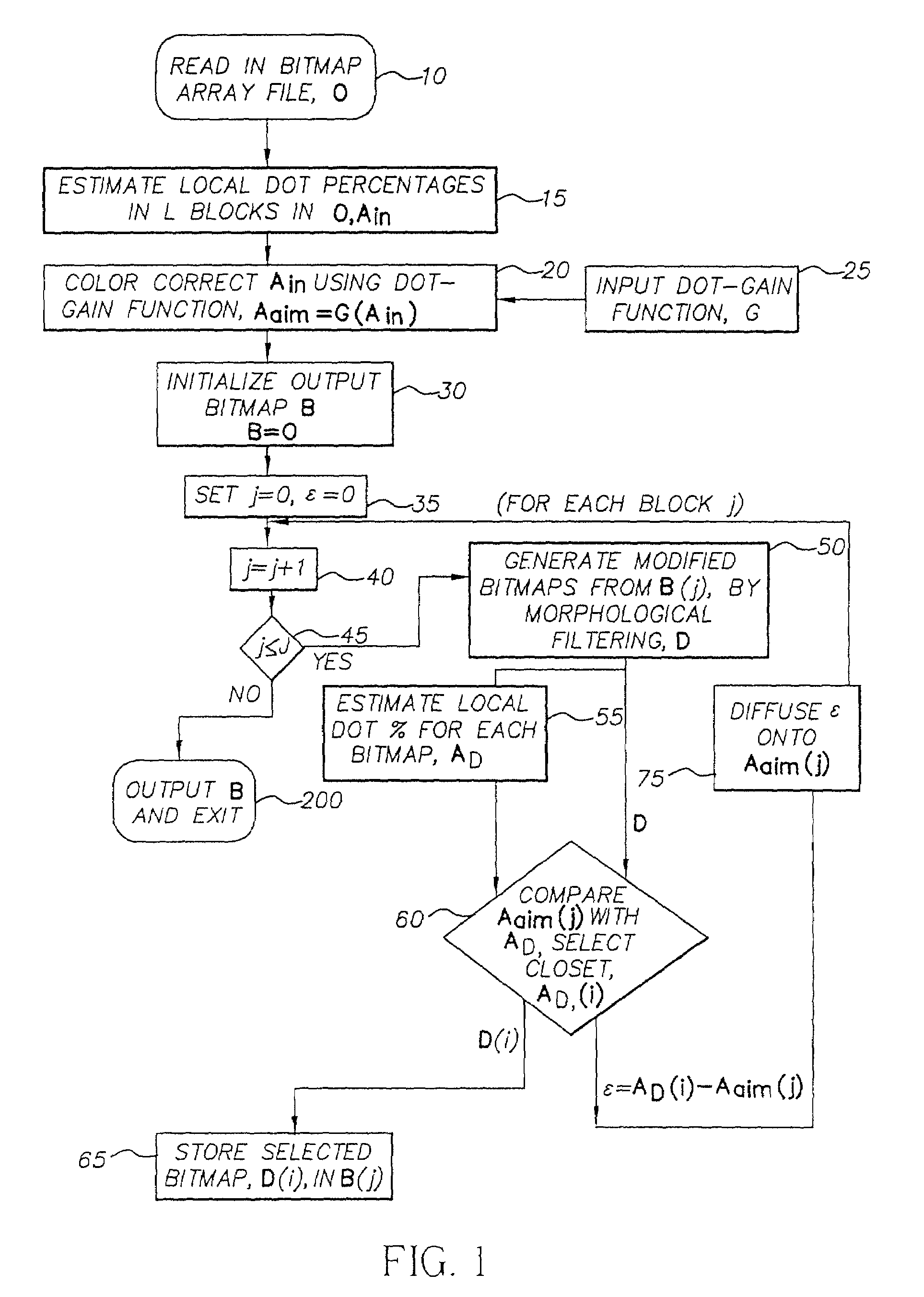Halftone dot-growth technique based on morphological filtering
a morphological filtering and halftone technology, applied in the field of digital halftone dot growth technique based on morphological filtering, can solve the problems of patent failure to teach the way to perform descreening and proof may be made on the system, so as to reduce the visibility of the remaining rounding errors and reduce the rounding error
- Summary
- Abstract
- Description
- Claims
- Application Information
AI Technical Summary
Benefits of technology
Problems solved by technology
Method used
Image
Examples
Embodiment Construction
[0037]The present invention offers an efficient technique to adjust the dot sizes of bitmap image files such that the color and tone of the bitmap (binary image) files can be adjusted prior to printing.
[0038]These bitmap files can consist of single channel bitmaps such as those for a single color device (e.g., a black-and-white laser printer), those for a CMYK output device (e.g., a printing press or a graphic-arts proofer), or any output device that utilizes bitmap files of any number of channels (e.g., a multi-ink inkjet printer).
[0039]In the present invention, the color and tone of the bitmap files are adjusted by increasing or decreasing the effective percent dot (image signal) using morphological filtering and selection operations.
[0040]The main purpose of the present invention is to control the size of the dots in a pre-existing halftone bitmap. This bitmap could have been generated by a digital screening system (i.e., a RIP) or it could have been generated by scanning photogr...
PUM
 Login to View More
Login to View More Abstract
Description
Claims
Application Information
 Login to View More
Login to View More - R&D
- Intellectual Property
- Life Sciences
- Materials
- Tech Scout
- Unparalleled Data Quality
- Higher Quality Content
- 60% Fewer Hallucinations
Browse by: Latest US Patents, China's latest patents, Technical Efficacy Thesaurus, Application Domain, Technology Topic, Popular Technical Reports.
© 2025 PatSnap. All rights reserved.Legal|Privacy policy|Modern Slavery Act Transparency Statement|Sitemap|About US| Contact US: help@patsnap.com



